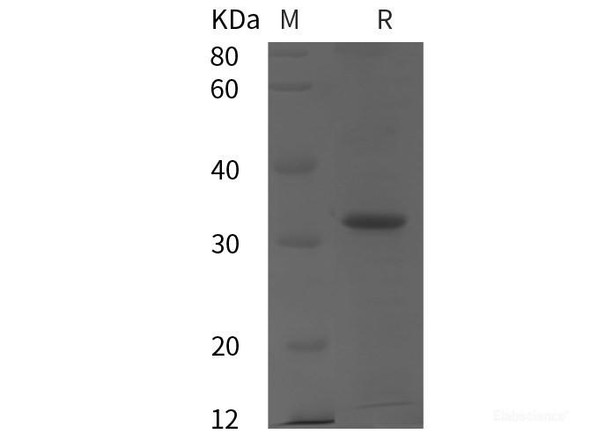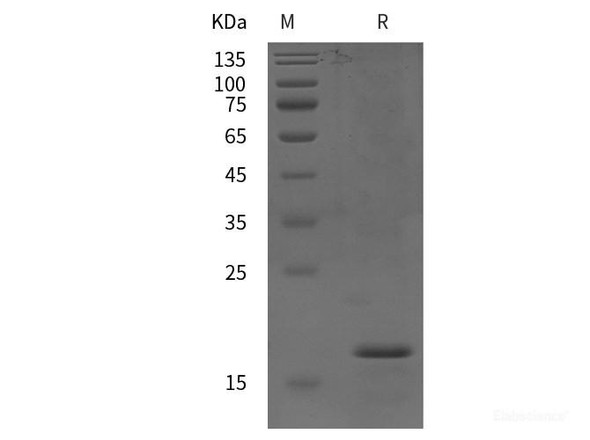Human FTH Recombinant Protein (His tag)
- SKU:
- RPES5435
- Product Type:
- Recombinant Protein
- Species:
- Human
Frequently bought together:
Description
| Product Name: | Human FTH Recombinant Protein (His tag) |
| Product Code: | RPES5435 |
| Size: | 20µg |
| Species: | Human |
| Expression Host: | E.coli |
| Synonyms: | Ferritin heavy chain, FTH1, FTH, FTHL6, Ferritin H subunit, Cell proliferation-inducing gene 15 protein, FHC, HFE5, PIG15 |
| Mol Mass: | 20.02 kDa |
| AP Mol Mass: | 28 kDa |
| Tag: | N-His |
| Purity: | > 95 % as determined by reducing SDS-PAGE. |
| Endotoxin Level: | Please contact us for more information. |
| Bio Activity: | Testing in progress |
| Sequence: | Met 1-Ser 183 |
| Accession: | P02794 |
| Storage: | Generally, lyophilized proteins are stable for up to 12 months when stored at -20 to -80°C. Reconstituted protein solution can be stored at 4-8°C for 2-7 days. Aliquots of reconstituted samples are stable at < -20°C for 3 months. |
| Shipping: | This product is provided as lyophilized powder which is shipped with ice packs. |
| Formulation: | Lyophilized from sterile PBS, pH 7.4. Normally 5 % - 8 % trehalose, mannitol and 0.01% Tween80 are added as protectants before lyophilization. Please refer to the specific buffer information in the printed manual. |
| Reconstitution: | Please refer to the printed manual for detailed information. |
| Background: | Ferritin heavy polypeptide 1(FTH1); is a ubiquitous intracellular protein which stores iron in a soluble; non-toxic; readily available form. FTH1 has ferroxidase activity and is important for iron homeostasis. Iron is taken up in the ferrous form and deposited as ferric hydroxides after oxidation. Ferritin is composed of 24 subunits of the light and heavy ferritin chains. It plays a role in delivery of iron to cells and mediates iron uptake in capsule cells of the developing kidney. Variation of ferritin subunit composition may affect iron absorption and release in different tissues. Deficiency of ferritin proteins may cause several neurodegenerative diseases. Almost all living organisms can produce this protein; including algae; bacteria; higher plants; and animals. |










